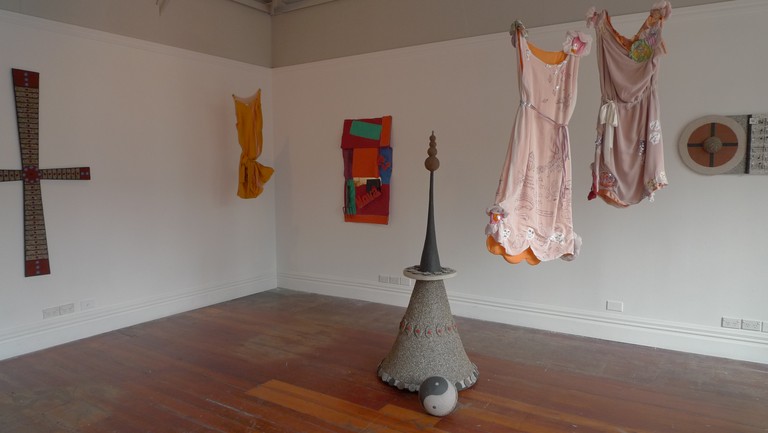Exhibition Essays
Tea Time
November 2009
Encounters & End Points
Reuben Schrader, Vera Mey

Our experiences with artworks, positive or negative, are special to us. We give ourselves a moment to step outside what we assume and just see where the work takes us. But even in that suspended moment, we are negotiating with the work.
To get to something we recognise as ‘meaning’, we use the technology available to us, be it pen, paintbrush, or camera, to activate thoughts and emotions. In the space of the gallery, the artwork is that technology.
There’s always a frame to an artwork. The time of day, your mood, the colour of the walls, the text on the walls, the location, these all contribute to viewing and encountering a work. Beyond this, many viewers bring with them a perception that art is infinitely complex and requires secret knowledge. Trying to have an immanent moment while this is whirling around is difficult.
The exclusion of a viewer’s experience is a serious problem. Art often is complex, but not in the way that worries people. One reason art is so valuable is that it can create such variable and subjective experiences among widely different people. Approaching an understanding of a work requires accepting the validity of this subjectivity. If that gets shut down, so does the work itself.
We often let language trump our experiences, and the need to put words to non-linguistic experience drives the adoption of terminology. Words bring with them entire structures of connotation and historical usage. Useful terms, like feminism or cultural identity, can impose themselves over momentary experiences, making the moment about the word, the history, rather than engagement with the work.
Terminology can create a black box, substituting an opaque, unidirectional meaning for the messy and varied process the viewer is experiencing. It can finish the artwork, leaving the observer with no autonomy to select their own relationship to, or place within it. By categorising, the work is no longer able to shift
in and out of meanings.
Acknowledging the black box is a step in the right direction. Once you know you’re being distracted, you can refocus. And the very negotiation that introduces terminology can unpack it again, turning it back into a process that can be played with.
This whole idea is predicated on the belief that the viewer should be trusted with their own encounter, even though there is always going to be a tension between their past and present experiences. For the work to be active, the autonomy of the viewer’s perception is essential.
The success of negotiation relies on appreciating that deconstruction (and irony, for that matter) can’t be the end point. There has to be a generative element, a choice made that creating something new is okay.
